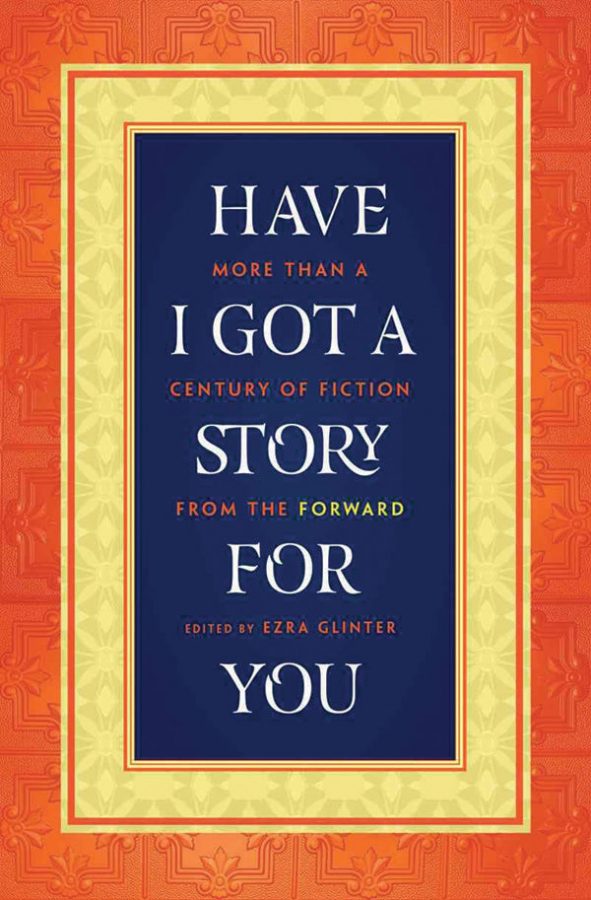Sparkling fiction from Yiddish newspaper spans 20th century
Published April 20, 2017
It must have been a prodigious effort by editor Ezra Glinter to look through countless Yiddish Forward microfilms going back more than 100 years and come up with this superb collection of short fiction.
Unlike contemporary American newspapers, Yiddish papers here and in Europe published fiction. Readers looked forward to the weekend editions in which they could find stories by favorite authors and emerging writers.
This collections features stories written from 1907 to 2015. It boasts contributions by 20 talented translators, including Glinter, who provides cogent and insightful introductions to each writer. Many of the famous names in 20th century Yiddish literature are here: Sholem Asch, David Bergelson, Avraham Reyzen, Israel Joshua Singer, Isaac Bashevis Singer and Chaim Grade. But even the lesser known names were familiar for decades to the Forward’s loyal audience.
It is a beautifully produced book, from a stunning, colorful cover, the introductions by Glinter and novelist Dara Horn and, of course, the lively fiction.
The anthology begins with a 1907 story by Rokhl Brokhes, “Golde’s Lament,” about a woman who is tormented with jealousy because her husband has sailed to America with another woman posing as his wife. It concludes with a 2015 story by Yiddish Forward editor Boris Sandler, “Studies in Solfege,” about which I’ll tell you later.
Even the title, “Have I Got a Story for You,” resonates with Yiddish braggadocio.
First, we read stories about the immigrant experience, including one by Abe Cahan, the guiding spirit of the Forward (known in Yiddish as the Forverts) from 1903 to 1946, and humorous sketches by B. Kovner who wrote for the paper for the nearly 70 years of his 100-year life (1874-1974).
Some of the book’s most powerful pages, whose sheer force of imaginative and vivid prose overwhelms the reader, were written in Russia under wartime circumstances. Here we see gripping stories by Sholem Asch, David Bergelson and I.J. Singer. Tales with such stress and suspense make New York-based fiction about collecting rent or a love-lorn seamstress pale by comparison.
It is also noteworthy that whereas stories by Yiddish masters such as Peretz, Sholom Aleichem and Avraham Reyzen invariably pertained to Jewish life, in this collection Yiddishkeit is at a minimum.
One story by the very secular daughter of Sholom Aleichem, Lyala Kaufman, speaks of a woman who prays daily but doesn’t particularly like her assimilated son and daughter-in-law. She closes her morning prayer with a wish that “they die a horrible death.” A story by Zalman Schneour tells of a little youngster who is tempted and finally succumbs to tasting pig meat.
In their East European shtetls, the rhythms of Jewish life were central to Jews’ existence. But in the United States, with many of the early immigrants not committed to Jewish observance, the secular-minded Yiddish writers working for the socialist-leaning Forward did not have Yiddishkeit at the forefront of their creative imaginations.
Noteworthy, too, is that not one of the writers included in “Have I Got a Story for You” was born in the United States. One can understand that early in the 20th century the Yiddish writers would be Europe born.
But as the decades progressed, one would have expected at least one American-born Yiddish writer to emerge. But none did. Also, if you look at the years of birth of the contributing writers, only three were born after 1910: Yente Mash (1922), Mikhoel Felsenbaum (1951) and Boris Sandler (1950).
Certainly, the decimation of Jewry during the Holocaust and the repressive Stalinist regime in Russia had something to do with this gap.
Forward editor Sandler’s “Studies in Solfege” is the book’s final tale. It focuses on a teenage boy who describes taking singing lessons from a slightly older girl who also introduces him to the Hindu sex guidebook, “The Kama Sutra.”
I have resisted quoting delectable lines from this anthology – until now. When the girl in Sandler’s story asks the boy whether he knows what “The Kama Sutra” is, he says the first thing that comes into his head: “Of course. It’s a type of Japanese wrestling.”
Curt Leviant is the author of two highly praised recent novels, “King of Yiddish” and “Kafka’s Son.”















